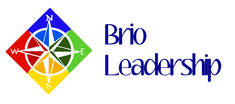 All professional women, and the men they work with, need to read a very timely and informative book called How Women Rise by Sally Helgesen and Marshall Goldsmith[1]. I was so excited to discover this book that I read it in one sitting. It is an important contribution to the understanding of how women can adapt their behaviors to get ahead in a male dominated workplace. Authors Helgesen and Goldsmith are a star-studded partnership. Since publishing her best-seller The Female Advantage in 1990, Helgesen has been a sought-after leadership coach, author and speaker. Goldsmith is known as “the world’s preeminent executive coach” and is the author of several New York Times bestsellers, starting with What Got You Here Won’t Get You There. These two heavy-weight authorities have great advice for women that’s based on their decades-long experience observing and coaching both women and men. What this book does not address are the structural and systemic reasons that cause women to struggle to advance their careers. Some of these workplace truths include unconscious bias in hiring/promotions and personnel practices that assume you don’t have a family life. The authors acknowledge the existence of these constraints on page 120: “workplace structures and expectations created with men in mind continue to frustrate many women’s talents and ambitions”. Instead, the book focuses on the behaviors that typically hold women back and sheds light on what they can do differently. In that way, the book is highly optimistic and empowers women to deal with what they can control, which is their own behaviors. The authors describe twelve habits that hold women back. My one criticism of the book is that twelve habits is too many. The human brain can’t retain that many items in working memory. Interestingly, the authors side-handedly admit that twelve might be overwhelming by creating “habit clusters” that group similar habits together, suggesting that, for instance: “if you have a problem with Habit 1, Reluctance to Claim Your Achievements, you probably also struggle with Habit 2, Expecting Other to Spontaneously Notice and Reward Your Contributions” (p 190-191). Although I wish the authors had simplified things, perhaps by reducing the habits from twelve to a handful that are easier to remember, that might have created a less compelling book or at least, a slimmer and less imposing one. In addition to the above-mentioned Habits #1 and #2, some other habits that women can kick are:
In a nutshell, this book encourages women to adopt the following behaviors:
My advice on how to start practicing new behaviors is to follow a three-step method:
The more you experiment, the more you will gain confidence with the new behavior until it becomes a habit. The experts say that it takes us about a month to install a new habit, so be patient with yourself as you climb the learning curve. Use this informational book as your guide to learning new behaviors, and watch your career and personal success flourish! [1] Helgesen, Sally, & Marshall Goldsmith. 2018. How Women Rise: Break The 12 Habits Holding You Back From Your Next Raise Promotion Or Job. New York: Hachette Books.  Kristin Robertson is the Happy Mondays Coach, whose purpose is to ensure that your employees love to go to work on Monday mornings. She is certified by Human Synergistics to conduct both the Organizational Culture Indicator and Organizational Effectiveness Indicator, which have been used by thousands of companies to transform their culture. Her breadth of experience in culture transformation, leadership development and executive coaching make her the perfect partner for a company culture turn-around.
0 Comments
Leave a Reply. |
From the desk of
|
Our services |
Our Company |

 RSS Feed
RSS Feed

